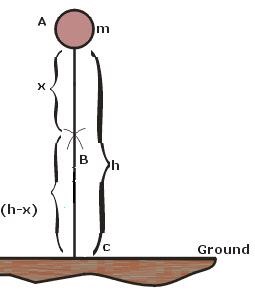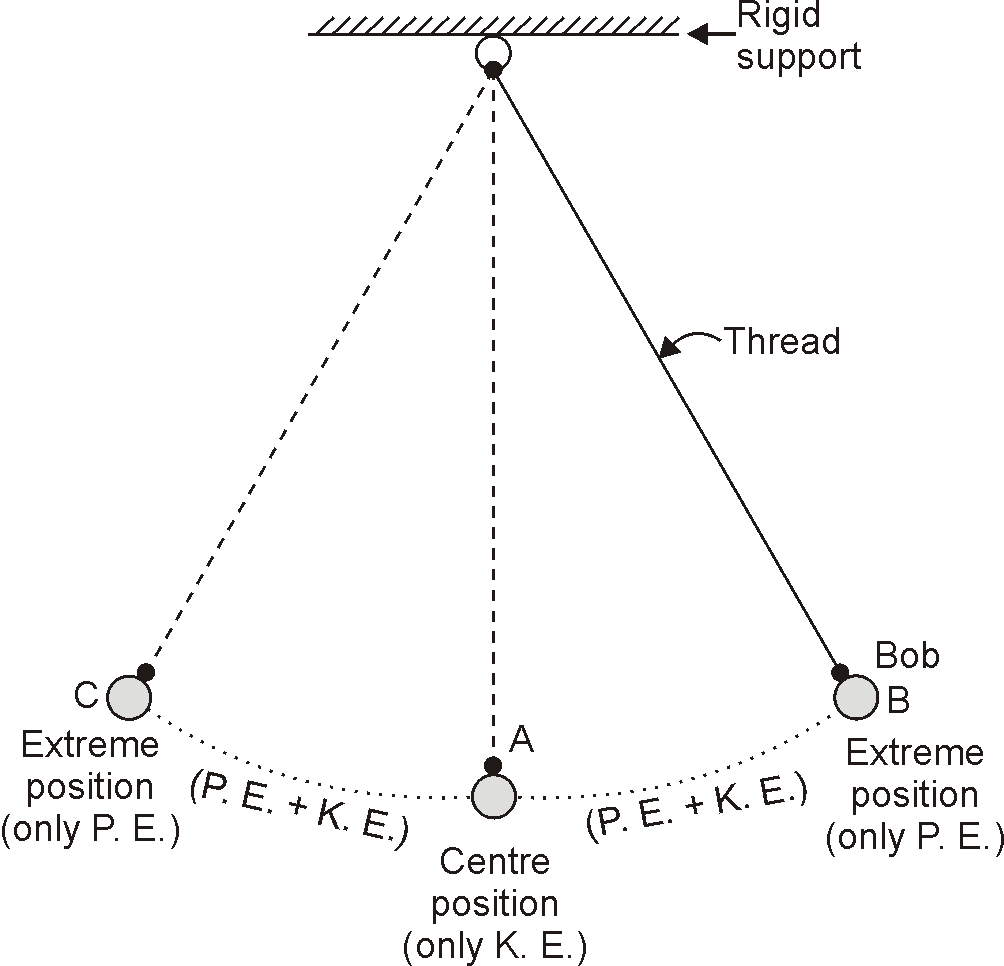
Let a body of mass ‘m’ placed at a height ‘h’ above the ground, start falling down from rest.
In this case we have to show that the total energy (potential energy + kinetic energy) of the body A, B and C remains constant i.e, potential energy is completely transformed into kinetic energy.

Body of mass m placed at a height h
At A,
Potential energy = m g h
Total Energy at A = Potential Energy + Kinetic Energy
= m g h + 0
Total Energy at A = m g h ………………………………..(1)
At B,
Potential energy = m g h
= m g (h – x) [height from the ground is (h – x)]
Potential energy = m g h – m g x
The body covers the distance x with a velocity v. We make use of the third equation of motion to obtain velocity of the body.
Kinetic energy = m g x
= m g h – m g x + m g x
Total Energy at B = m g h …………………………………(2)
At C,
Potential Energy = m x g x 0
Potential energy = 0
The freely falling body has covered the distance h.
Here, u = 0, a = g and s = h
Total energy at C = m g h………………………………(3)
It is clear from equations 1, 2 and 3 that the total energy of the body remains constant at every point. Thus, we conclude that law of conservation of energy holds good in the case of a freely falling body.
Suppose we have a ball of mass m and we raise it to a height h above the ground. As the ball falls its potential energy is gradually converted into an equal amount of kinetic energy
However, the sum of potential energy and kinetic energy of the ball remains the same at every point during its fall.
A swinging simple pendulum is an example of conservation of energy.
In a swinging pendulum, potential energy is transformed into kinetic energy, and the kinetic energy is transformed back into potential energy (or an oscillating simple pendulum)

The total energy of the swinging pendulum at any instant f time remains the same (or conserved).